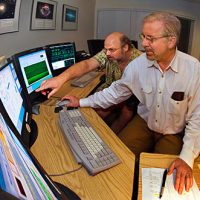An international team of astronomers has released the largest ever compilation of exoplanet-detecting observations made using a technique called the radial velocity method. By making the data public, the team is offering unprecedented access to one of the best exoplanet searches in the world.

“HIRES was not specifically optimized to do this type of exoplanet detective work, but has turned out to be a workhorse instrument of the field,” said Vogt, a professor emeritus of astronomy and astrophysics. “I am very happy to contribute to science that is fundamentally changing how we view ourselves in the universe.”
Continue reading “Astronomy Team Releases Planet-Search Data”
